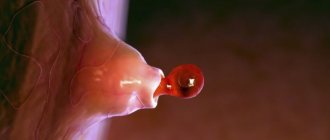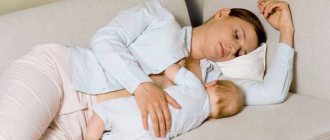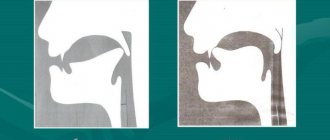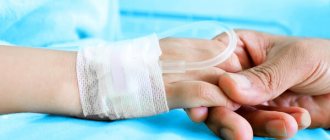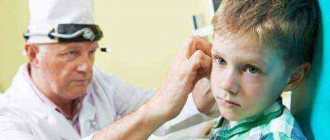Pregnancy and childbirth were successful. It would seem that the most difficult period is behind us. However, the restoration of the female body does not occur immediately. Often, a young mother is bothered by pain of various types, especially in the lower back.
This problem is familiar to every second woman. There may be several reasons for this, most are a consequence of changes in the body. Physical exercise and massage will help get rid of such discomfort. But there are also pathological pains that require medical intervention.
Why does my lumbar back hurt after childbirth?

The recovery process after the birth of a child lasts up to six months. At this time, hormonal levels change, muscles and joints become less elastic, and the pelvic bones and spine return to their place. All this provokes the appearance of pain in the lumbar region.
Causes of pain:
- Additional pressure on the spinal column.
- Spinal deformity.
- Muscle modifications.
- Difficult birth.
- The stress of caring for a child.
- Compression of nerve endings.
Increased loads during pregnancy and childbirth
During pregnancy, a woman on average gains from 10 to 20 kg. The load on the heart and spine increases. The weight is distributed unevenly, so the pregnant woman is forced to constantly keep her back muscles tense . In the last trimester, the pressure on the vertebrae is the strongest, it leads to an increase in lumbar lordosis. If a woman did not exercise before pregnancy, she has a weak muscle corset that cannot withstand increased stress.

During natural childbirth, the load on the muscles and vertebrae increases several times. The coccyx bones deviate to allow the baby to pass through the birth canal. All this causes pain after childbirth. For some, pain persists for quite a long period, since restoration of the spinal column does not occur immediately.
Important : some mothers consider lower back pain to be a consequence of epidural anesthesia. In fact, this is not true. Statistics prove that even those women who gave birth without pain relief have back pain.
Spinal deformity

During the passage of the child through the birth canal, the sacrum may be displaced and large vessels may be compressed. As a result, quite pronounced lumbar pain appears.
Muscle modification
The growing fetus stretches the abdominal muscles, while the back muscles shorten. Because of this, painful sensations arise. The most severe muscle strain occurs during childbirth. If a woman has not done special gymnastics for pregnant women, preparing the body for childbirth, then she has a high risk of encountering a sprain. And the recovery process will be very painful.
Difficult birth
Difficult childbirth occurs in the case of a large fetus and a narrow pelvis of the woman in labor. As the child passes, the ligaments are stretched, and micro-tears of the ligaments may even occur. The most serious complication is symphysitis (divergence of the symphysis pubis). In severe cases, the symphysis ruptures, then unbearable pain will accompany the woman for months and can even lead to disability.
During difficult births, doctors use oxytocin stimulation, which provokes intense contractions. This muscle contraction is not painless.
Childcare stress

After giving birth, a young mother does not have the opportunity to rest and recover. She immediately takes care of the baby. I have to do a lot of work while bending over: swaddling, bathing. Restless children require constant holding. Because of this, a woman’s back experiences great stress. Added to this is lack of sleep, constant fatigue, and worry about the child, which cannot but affect the health of the spine.
Compression of nerve endings
Any degenerative changes in the spine that were hidden before pregnancy become aggravated during pregnancy. Due to the softness of cartilage, the vertebrae are more vulnerable and mobile. Therefore, exacerbation of osteochondrosis or hernia often leads to pinched nerve roots. Nerve compression can also occur during childbirth. In this case, the pain is cutting in nature and radiates to the buttock, thigh, and lower leg. Radicular syndrome does not go away on its own; medical attention is required.
Exercises to strengthen your child's muscles
- It is worth accustoming your child to gymnastics from the age of three, since it is at this age that children understand what their parents require of them. Just keep in mind that, of course, the exercises themselves should be simple, because otherwise the child will quickly get tired and bored.
- If your child attends kindergarten, and there the children do exercises together with the teachers, you should use the same familiar set of exercises at home - the child will do them automatically, and this is exactly what is required to develop the habit.
- It is optimal if the exercises are carried out in the morning, immediately after the child wakes up. If this is not possible, you need to do exercises 1-2 hours before the baby goes to bed. But not later, since during exercise the central nervous system is overexcited and problems with sleep may occur. You can also do light exercises after a nap or breakfast.
- If the child did not previously know what exercise is, be sure to start not with strengthening the muscles, but with teaching the child the basics of gymnastics. Tell us about the basic starting points, teach how to count, etc. It is very important to interest the child by choosing exercises to strengthen muscles based on imitation of animals (“Peck like a bird,” “Flap your wings like a butterfly,” etc.).
- Each exercise to strengthen a child’s muscles must first be learned. Do it slowly, voice what you are doing at the moment, and, of course, control the child’s movements. It is best to choose upbeat, cheerful music for classes that your baby likes. Gradually speed up the pace if you see that the child has memorized the exercise.
- It’s great if the exercise includes exercises for different muscle groups - in this case it will not be tiring - some muscles will be involved in work, while others will rest. You need squats, bends, jumping, and running.
- Ideally, charging time is about 5-10 minutes. A set of simple exercises will help strengthen your child's muscles. A competent approach to exercise will help you maintain your baby’s health.
- In exercises to strengthen the child's muscles, you need to use your own weight - no weights are needed. This is especially true for barbells and weights - it’s generally better to forget about them until the child’s 16th birthday. And then, after this you will need to train exclusively under the guidance of a trainer - take this into account.
- Boys aged 14-15 years can only exercise with dumbbells while lying down to minimize the likelihood of spinal deformation. The weight of dumbbells should be no more than 1-1.5 kilograms.
- You can include pull-ups, squats and push-ups in the exercise program for children. According to generally accepted standards, at 13-14 years old a child should be able to do 3-4 pull-ups. If a 15-year-old boy can do 20 pull-ups, then he can start using weights.
- Pay attention to stretching - it can strengthen muscles and joints and allow you to develop endurance. Exercises with an expander are especially good - keep this in mind.
Video: exercises to strengthen a child’s muscles
Treatment
If the appearance of pain is associated with physiological reasons, then no special treatment is required . Gymnastics, massage, diet will help. For pathological pain, drug treatment is required. The difficulty is that not all medications are compatible with breastfeeding. In difficult situations, when taking medications is still necessary, you have to switch to feeding the baby with formula.

The following methods can help get rid of lower back pain:
- Physiotherapy.
- Drug therapy.
- Massage.
- Folk remedies.
- Changing your daily routine.
Physiotherapy
Therapeutic gymnastics is aimed at restoring ligaments and strengthening the muscle corset, which will lead to the disappearance of pain. Also, with the help of exercises, lumbar lordosis, which provokes pain, is reduced.

An approximate set of exercises for restoring the back after childbirth:
- While standing, raise your arms straight up, reaching your fingertips towards the ceiling.
- Tilts of the body forward, backward, right, left. Bend over smoothly, avoiding pain.
- Sitting on the floor, spread your legs apart, bend alternately towards your right and left legs.
- Lie on your stomach, stretch your arms forward, raise your arms and legs straight at the same time.
- Lying on your back, bend your knees, lift your pelvis up, squeezing your buttocks.
- Standing on all fours, arch your back like a cat.
Drug therapy
The use of medications is justified for intense pain that worsens the quality of life of a young mother. Treatment is also required if nerve endings are pinched.

You can relieve severe pain using the following means:
- Novocaine blockade. This is a last resort when other means are ineffective. The affected area of the spine is injected with novocaine, this relieves pain and allows the patient to walk and do housework.
- Antispasmodics (No-shpa, Drotaverine). These drugs can be taken during lactation; they relax smooth muscles, thereby relieving pain.
- Non-steroidal anti-inflammatory drugs (Ibuprofen, Nise, Declofenac). They help relieve inflammation, pain, and reduce tissue swelling. It is believed that these drugs are compatible with breastfeeding, but their effect on the child’s body has not been fully studied. Therefore, NSAIDs are prescribed in a minimal dosage and for a course of no longer than 3-5 days. It is advisable to breastfeed your baby before taking the pill to minimize the negative effects of the medicine.
- Pain relieving ointments. Pain-relieving ointments based on ibuprofen do not have a negative effect on the child. To reduce pain, they are allowed during the postpartum period. However, they also cannot be used for a long time. The capsaicin patch is safe. It is glued to the painful area for a day; it relieves pain and inflammation well.
Important : analgesics Ketorol, Indomethacin, Baralgin are prohibited during lactation.
Massage
Massage is a very effective procedure for postpartum recovery. Massage is especially helpful for pain caused by muscle spasms or strains. During treatment, blood circulation improves, swelling is eliminated, and muscle tone increases. One course of 10 procedures is enough to forget about lower back pain forever.

Folk remedies
Due to the impossibility of using many medications during breastfeeding, folk remedies are preferable . You should definitely consult your doctor.
The following traditional medicines will help reduce back pain:
- Burdock leaf compress. They need to be doused with boiling water and applied to the sore spot. Cover the top with a woolen cloth. The compress can be left overnight.
- Honey rubbing. You need to rub your lower back quite intensively. This helps improve blood circulation.
- Mustard compress. Dry mustard is diluted with warm water to the consistency of sour cream. The resulting mixture is applied to the affected area. You cannot keep this compress for more than 5 minutes, so as not to burn the skin.
Important : mustard compresses are prohibited if a woman has gynecological problems.

Changing your daily routine
Establishing a daily routine will allow you to recover faster after the birth of a child. A young mother needs time to sleep and rest, and regular walks in the fresh air.
Recommendations for preventing low back pain:
- Avoid heavy lifting for the first few months.
- Control your weight. Extra pounds negatively affect the entire body.
- Choose a comfortable position for feeding your baby. It is better to do this in a chair so that your back is relaxed. You can also purchase special pillows for pregnant and nursing mothers.
- Sleep on a semi-rigid mattress that supports the spine in a physiologically correct position.
- Avoid bending over. You should lift objects from the floor by crouching, so that the main load falls on your legs.
- Do not carry your baby in your arms all the time. You need to choose a comfortable stroller, sling or special carrier.
- To bathe and change your baby, adjust the height of the bathtub and table so that your back does not experience additional stress.

